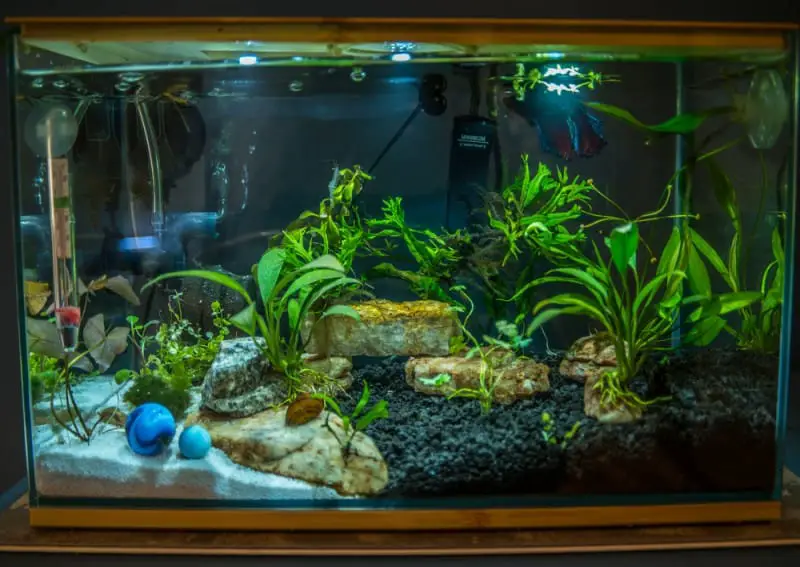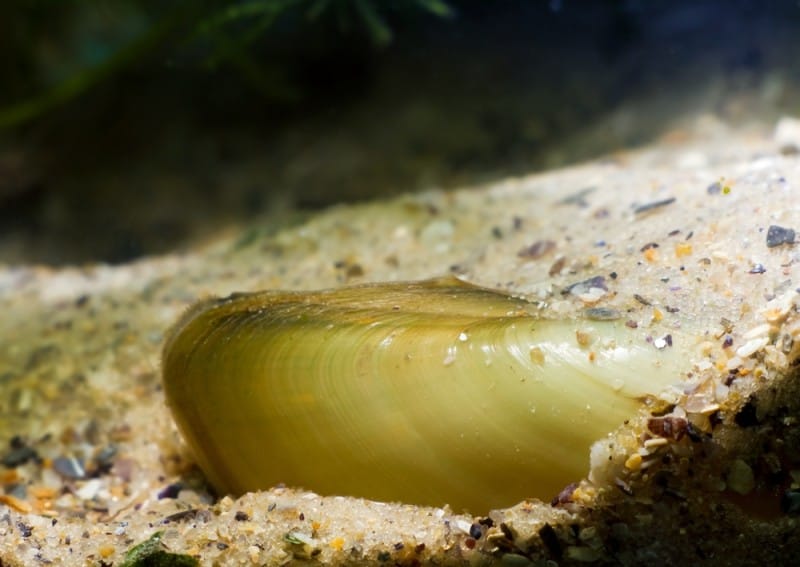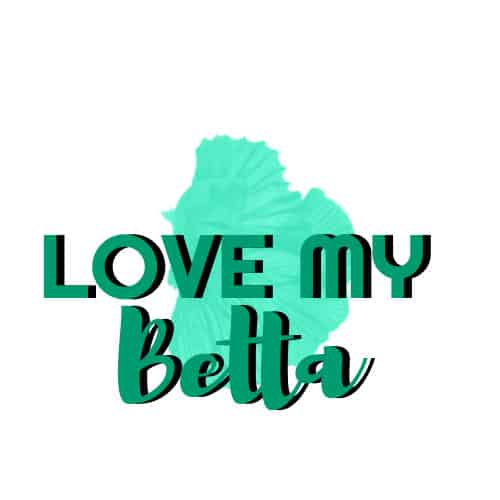Last Updated on April 22, 2022
The material you put for the bottom of your aquarium is a very important part of a betta fish tank. That layer is the substrate. Choosing what color of gravel can help simulate a natural home for your betta fish to live in. The substrate is important because it also provides a surface for good bacteria to attach to.
This article will discuss topics on what color gravel is best for betta fish that may serve as a guide for you in choosing one for your pet.
Table of Contents
What was the betta fish’s natural habitat like?

Betta fish will thrive in an environment similar to their original habitat. Betta fish originally came from the Mekong Basin of Thailand in Southeast Asia. We formerly know Thailand as Siam. This is where the betta’s other name Siamese Fighting Fish came from. They live in rice fields, streams, rivers, floodplains, and agricultural irrigation canals. These bodies of water have a bottom that is a mixture of gravel, sand, soil, mud, silt, and rocks. There are also plenty of plants that serve as shelter for the fish.
Related: 7 Best Gravel for Betta Fish in the Tank
A lot is really going on in such a habitat and a lot of decomposition happens too. The constant flow of water dilutes the byproducts of decomposition. We can not recreate such an environment in our tanks so what we will aim for is just for our tanks to seem as natural as possible.
Why is the substrate important?
Aquarium substrate or aquarium gravel will provide good bacteria with a vast surface area to colonize. These good bacteria help keep the tank water in excellent condition. Fish waste will drift down onto the substrate and will decompose. Rotting away will produce ammonia harmful to fish. Nitrosomonas bacteria will eat ammonia and convert it into Nitrites. Nitrobacter will then eat Nitrites and turn it into Nitrates. This is less toxic and you can reduce it by doing regular water changes.
The substrate will also provide anchorage for the roots of live plants. We will go into detail regarding the substrate to use if you take care of live plants.
The substrate also acts as a decorative element in your fish tank. The substrate will affect the aesthetic appeal of the aquarium you choose.
What color of gravel is best for betta fish?

We often consider the natural look the goal in the aquarium hobby. Aquarists want to simulate nature and bring it inside their homes. Natural colors are usually the best choice. Shades of brown color palette, neutral greys, and off-white tones are splendid gravel colors to choose from. Other fish keepers don’t like light-colored substrate because fish poop and other debris look so obvious.
Some manufacturers offer gravel with unnatural colors. The color you choose will ultimately depend on your preference. Your betta’s color will enhance and really look great in a natural setting. If you have a red betta, then choosing red-colored gravel will drown out its color when it goes down onto the substrate. This is just a personal observation though. Some betta fish keepers say that artificially colored gravel with unnatural colors brings stress in betta fish.
Children and other fish keepers will love to choose the brightest colors possible. The eye-popping neon pink, neon orange, neon yellow, neon blue, and the glow colors may seem cringe-worthy to others but it all goes down to preferences.
Check if your betta fish chooses to just stay in the upper area of your fish tank and doesn’t even go down to explore near the substrate. That may be a sign that your betta doesn’t approve of your color preferences. Kidding aside, your betta may find the colors too radical that it doesn’t seem at ease. If your betta seems fine by your choice of substrate, then you picked a good color of gravel.
Is the texture of the substrate important?
The texture is very important especially for the betta fish. Do not use pebbles with sharp edges, broken glass pebbles, and sharp stones. Your betta fish has long flowing fins that have delicate membranes easily cut by sharp objects. Injuries will make your betta fish prone to infection and a lot of diseases.
Aquasoil or aquarium soil substrate will not hurt your betta fish. Gravel covered with the colonies of good bacteria will feel slimy to touch and this is good for your betta fish. Your betta fish also has a slime layer that protects it.
How about the particle size of the substrate?

The advantage of using sand is the beauty it gives. Plus, fish poop is easily visible. The small particle substrates such as sand make maintenance more difficult and not recommended for the first time betta fish keepers. Using a gravel vacuum over sand will most likely suck up the sand together with water. Another disadvantage is that it becomes compact and will not let plant roots penetrate. This compact area can also house anaerobic bacteria that may form hydrogen sulfide harmful to fish.
This leaves us with the choice of gravel for beginners. Gravel is easier to clean during maintenance and will look great with your betta fish. It can somehow hide poop long enough until the next water change schedule. You can also be sure that your betta will not accidentally ingest it. Pick a size that isn’t too big to let fish poo and uneaten food to slide down gaps.
Some novice betta owners put marbles or glass beads as substrate. This is more of an aesthetic choice. Fish poop and uneaten food will pass down towards the bottom of the tank making cleaning more difficult.
How does substrate affect water of fish tanks?
Crushed coral is an example of a substrate that can alter water parameters. It will increase pH. Peat moss will lower ph. We do not recommend this for betta fish. Always choose a substrate that will keep water neutral as much as possible.
How thick should the substrate be?
We will use a 5-gallon tank which is the recommended volume for a single betta fish. If you decide not to have live plants, then 1 to 1.5 inches of the substrate is enough. If you will take care of live plants too then around 2 to 3 inches is an excellent start.
It has been a popular practice of aquascapers to have around 1.5 inches in the foreground and it becomes thicker towards the back of the fish tank. This gives a sense of depth to your fish tank especially if you choose your plants well. Short plants go into the foreground, then taller plants occupy the mid-ground, then the tallest plants are for the background.
This arrangement will give a sense of structure and create a beautiful image. It’s not recommended to fill up your betta fish tank with lots of plants if you’re a first time betta owner but when you get accustomed to taking care of a betta fish, this is something you may consider.
Can I not use any substrate in my betta fish tank?
This is actually a good option for easy cleaning of your betta fish’s tank. Many fish breeders use bare-bottom tanks. Make sure that your betta isn’t seeing its reflection on the bottom of the tank though. Remember that your betta is a highly territorial fish and having a bare-bottom tank can make it see its reflection all the time when the tank light is on. This will trigger your betta fish’s territorial instinct causing it to do gill flaring and fin fanning. Constant stimulation and flaring will exhaust your betta.
We can now conclude that choosing a substrate is important when setting up your betta fish’s tank. The color will really depend on your choice and the type will depend on whether you want to take care of live plants too.
| Image | Title | Price | Prime | Buy |
|---|---|---|---|---|
 Top Top | River Rocks Stones Natural Decorative Mixed Color Pebbles Fish Tank Gravel Small Garden Rocks Soil Cover for Aquariums, Landscaping, Vase Fillers, Succulent, Tillandsia, Cactus, Terrarium Plants 2.2lb | PrimeEligible | Buy Now | |
 Top Top | BallHull 1.4cm Decoration Fish Tank Gravel, Rocks Glowing in The Dark for Fish Turtle Tanks, Gardens, Flower Pots, 300 Pcs. | PrimeEligible | Buy Now | |
 Top Top | QIAONIUNIU 100 Pcs New Colorful Glow in The Dark Pebbles Stones Rocks for Fish Tank Aquarium Garden Walkway | PrimeEligible | Buy Now | |
 Top Top | KISEER Clear Aquarium Glass Stone Bulk 1 LB Sea Glass Beads Gems Marbles Pebbles Gravel Rock for Aquarium, Fish Tank, Garden, Vase Fillers, Succulent Plants Decor (Sea Blue) | PrimeEligible | Buy Now | |
 Top Top | WAYBER 1 Lb/460g Colorful Pebbles Decorative Crystal Stones Sea Glass Opal Rocks Gravel Sand for Aquarium/Turtle Tank/Succulent Plants/Flowerpot/Vase Decoration (Fill 1 Cup) | PrimeEligible | Buy Now |
